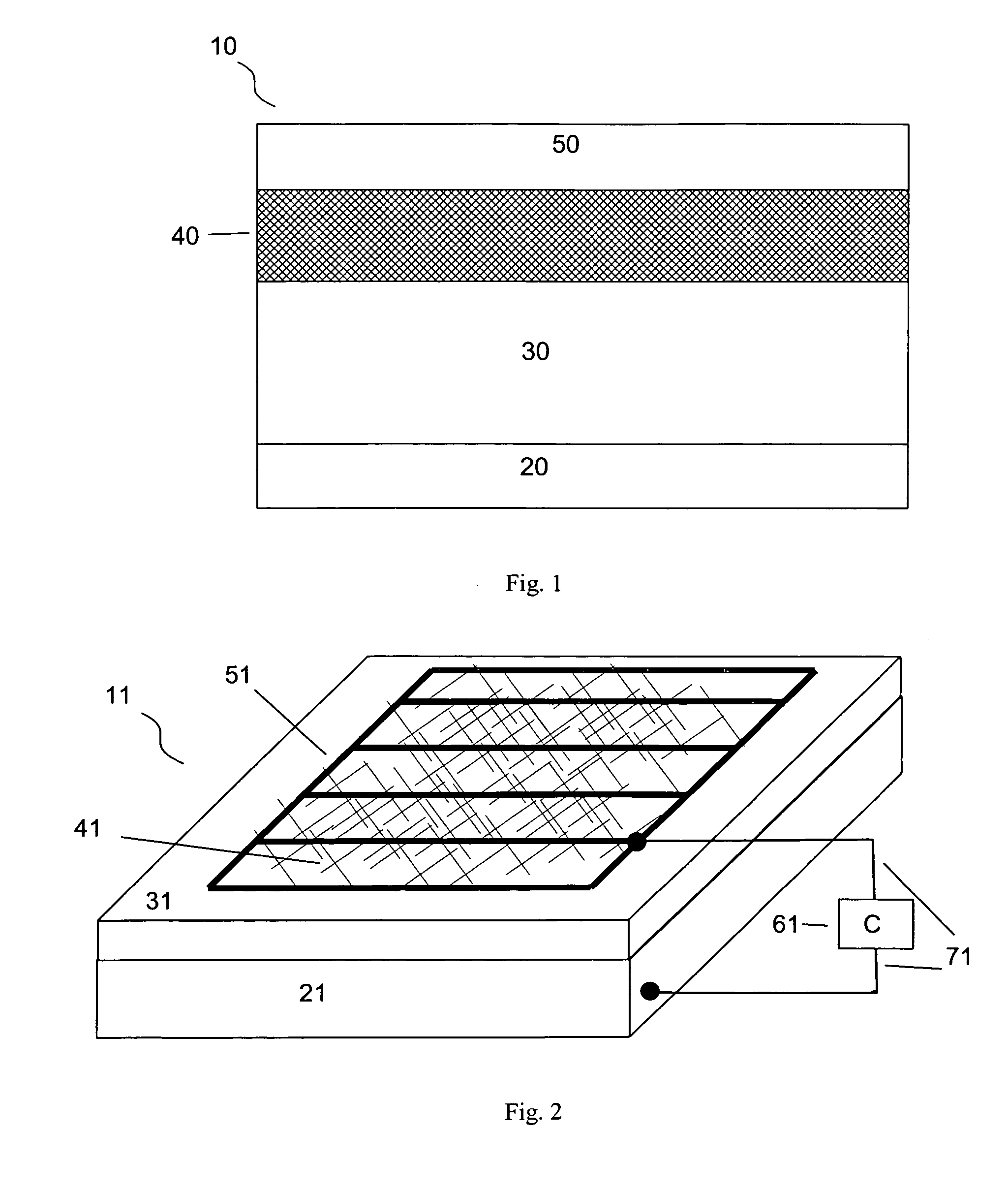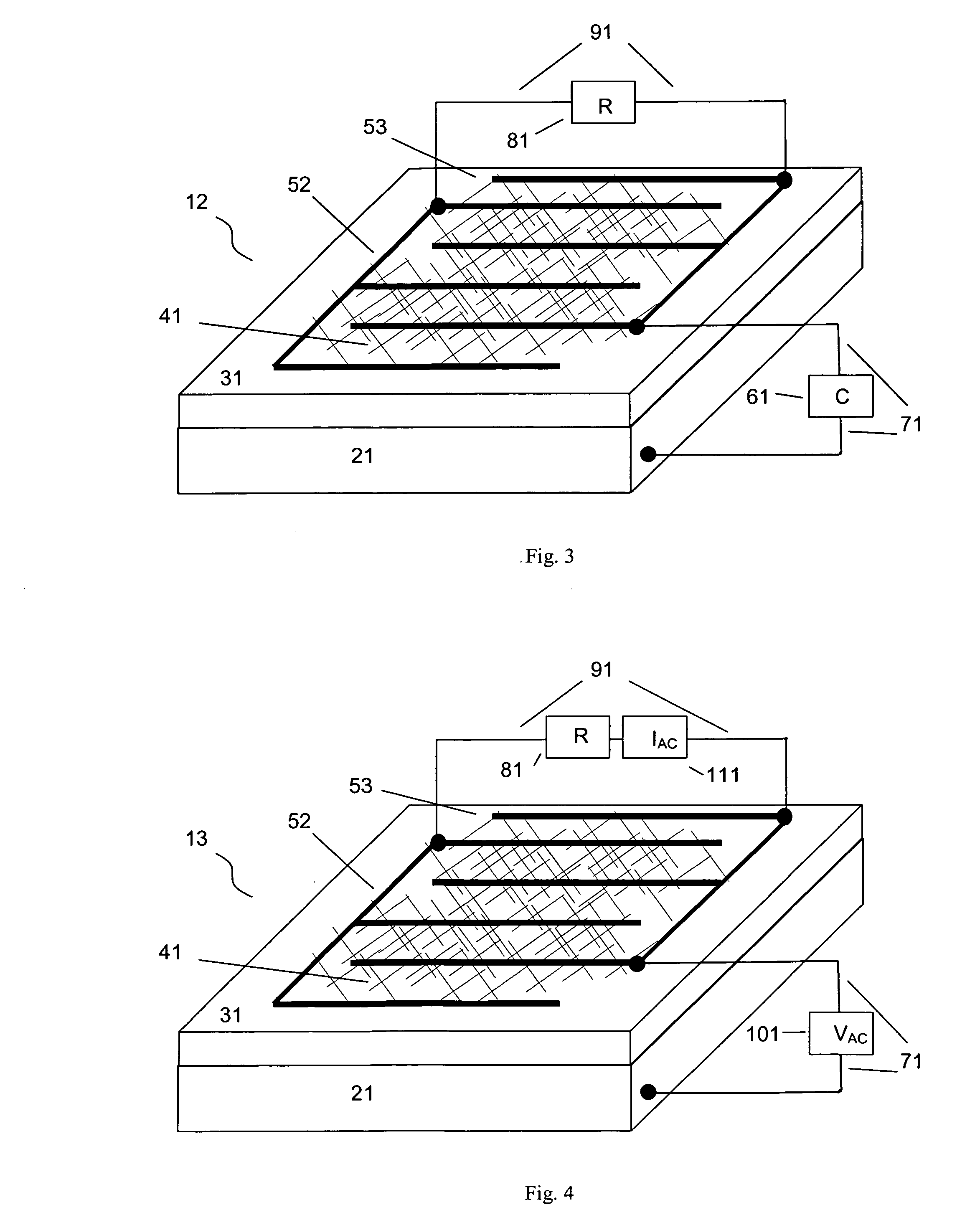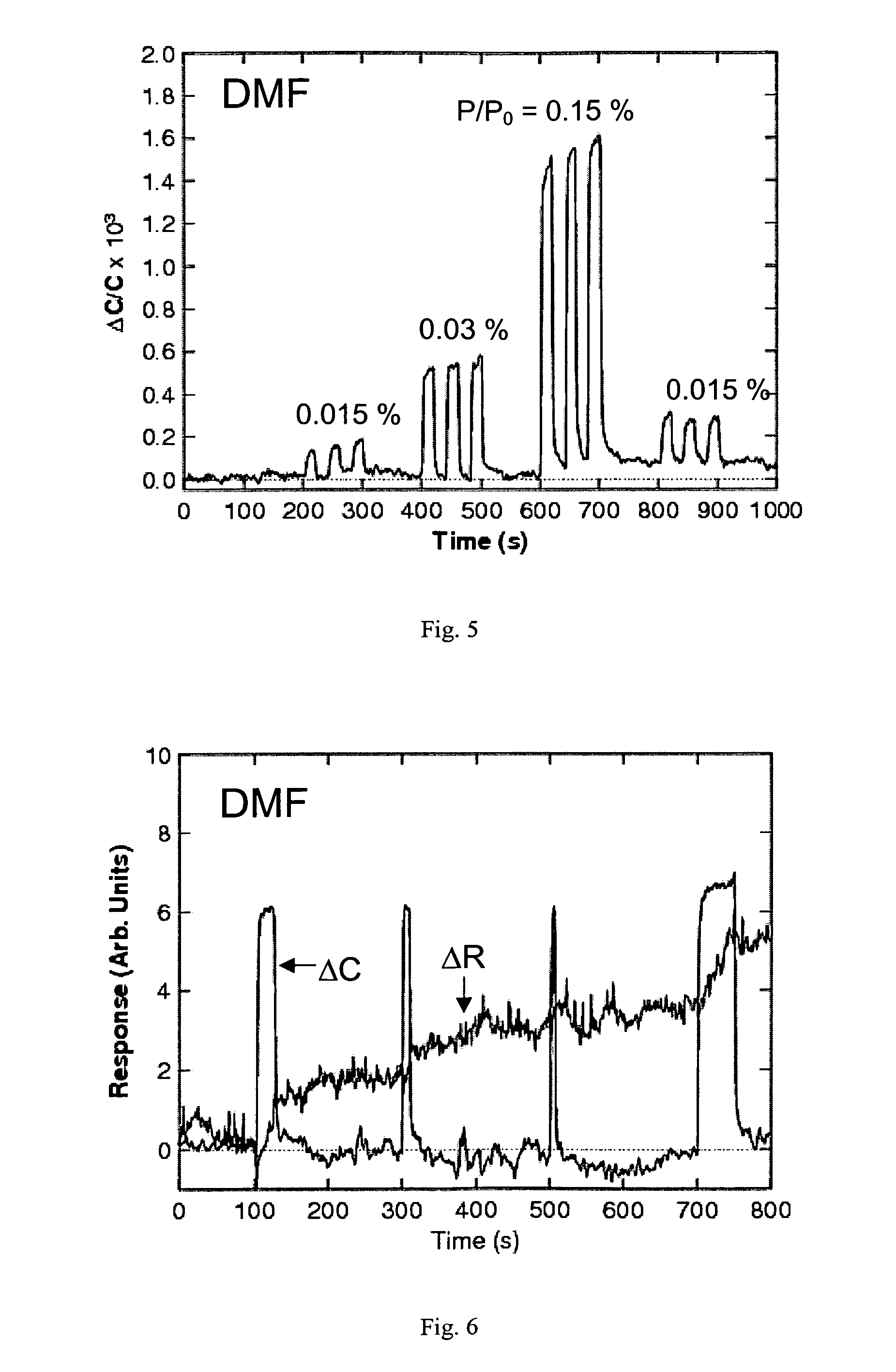Capacitive based sensing of molecular adsorbates on the surface of single wall nanotubes
a nanotube and capacitive technology, applied in the field of sensor, can solve the problems of slow response, unstable conductive particle/polymer interface, and difficult low-vapor-pressure materials such as explosives
- Summary
- Abstract
- Description
- Claims
- Application Information
AI Technical Summary
Benefits of technology
Problems solved by technology
Method used
Image
Examples
example 1
[0051] General procedure for growth of nanotube films and formation of top electrode—Select the desired substrate such as heavily doped silicon wafers with a thick thermal oxide, which may or may not be thinned to achieve a target, specific thickness. Alternatively, lightly doped silicon with patterned heavily doped areas may be used to isolate devices from one another. Alternatively, very thin, free-standing, supported films may be used.
[0052] Clean the substrate. While there exist many well-established methods of cleaning, treatment with a CO2 snow-jet process may have advantages. The function of this process, in addition to mechanical cleaning, is to charge the insulating surface.
[0053] Deposit a thin, sparse layer of growth catalyst on the surface. One process uses a solution of catalyst in alcohol: [0054] a. Prepare the catalyst solution. The catalyst solution used here is a mixture of 14 mg FeNO3:(H2O)9 in 80 mL isopropyl alcohol, stirred for at least 2 hours but generally n...
example 2
[0074] Capacitance measurement—SWNT chemicapacitors were fabricated by using chemical vapor deposition to grow a SWNT network on a 250 nm-thick thermal oxide on a highly doped silicon substrate. For each sensor a 2 mm×2 mm interdigitated array of Pd electrodes was deposited on top of the SWNT network by using photolithography and lift-off. The interdigitated electrodes provided contacts for the simultaneous measurement of both the capacitance and the resistance of the SWNT network. The region inside the array was protected by photoresist and the unprotected SWNTs were removed from the substrate by a CO2 snowjet. The photoresist was then removed exposing the SWNT network to the ambient environment. The chemical vapors were prepared by mixing saturated vapors of the analyte with dry air, and the concentrations are reported as a fraction of the equilibrium vapor pressure, P / P0.
[0075] The SWNT network formed an array of nanoscale electrodes that served as one plate of the chemicapacito...
example 3
[0077] Capacitance and resistance measurement (DMF and DMMP)—FIG. 6 shows a plot of the resistance and capacitance of a SWNT network measured simultaneously in response to 25, 10, 5 and 50 s doses of DMF. The magnitude of the capacitance response is independent of the delivery time and rises and falls immediately upon the delivery and removal of the DMF. In contrast, the resistance response is much slower and behaves like a dosimeter, integrating the dose of DMF.
[0078] Different adsorption sites may have controlled the capacitance and the resistance. The DMF that affects the capacitance desorbs much faster than the DMF that affects the resistance. For the vapors tested the capacitance consistently tracks the vapor concentration in real time whereas the resistance displays a wide range of behavior. For physisorbed molecules the desorption time should be <<1 s, consistent with the capacitance measurements.
[0079] One possible explanation for the slow resistance response is that the D...
PUM
| Property | Measurement | Unit |
|---|---|---|
| thick | aaaaa | aaaaa |
| diameter | aaaaa | aaaaa |
| diameter | aaaaa | aaaaa |
Abstract
Description
Claims
Application Information
 Login to View More
Login to View More - R&D
- Intellectual Property
- Life Sciences
- Materials
- Tech Scout
- Unparalleled Data Quality
- Higher Quality Content
- 60% Fewer Hallucinations
Browse by: Latest US Patents, China's latest patents, Technical Efficacy Thesaurus, Application Domain, Technology Topic, Popular Technical Reports.
© 2025 PatSnap. All rights reserved.Legal|Privacy policy|Modern Slavery Act Transparency Statement|Sitemap|About US| Contact US: help@patsnap.com



